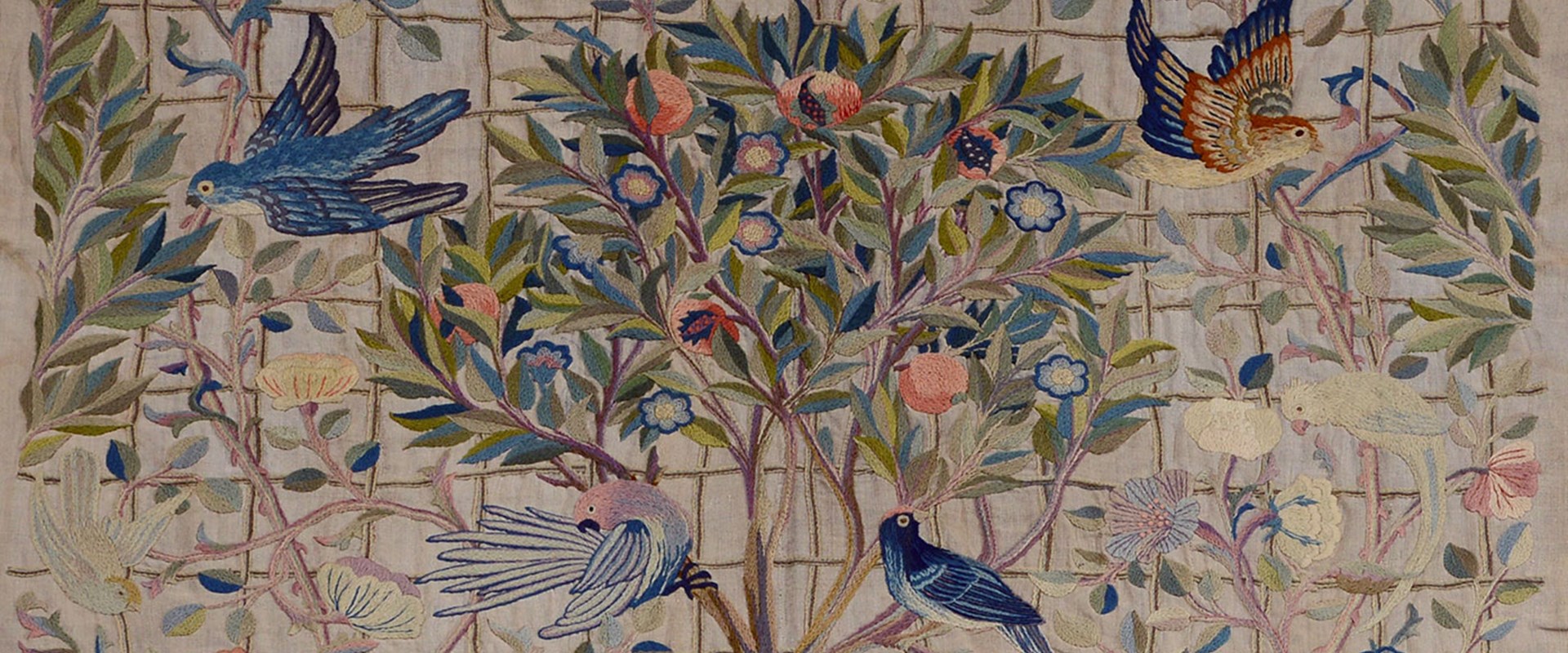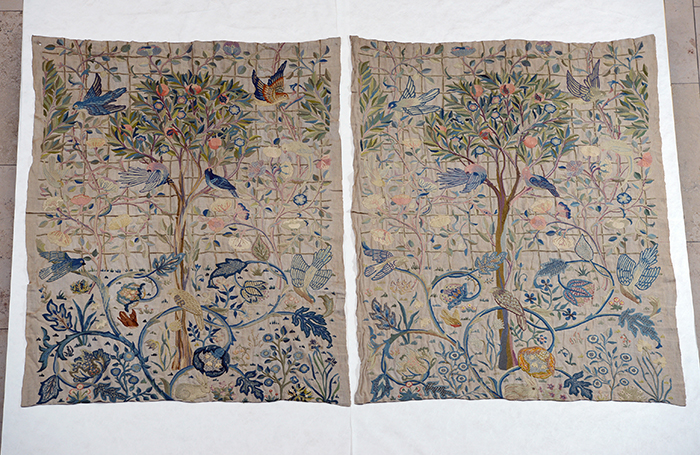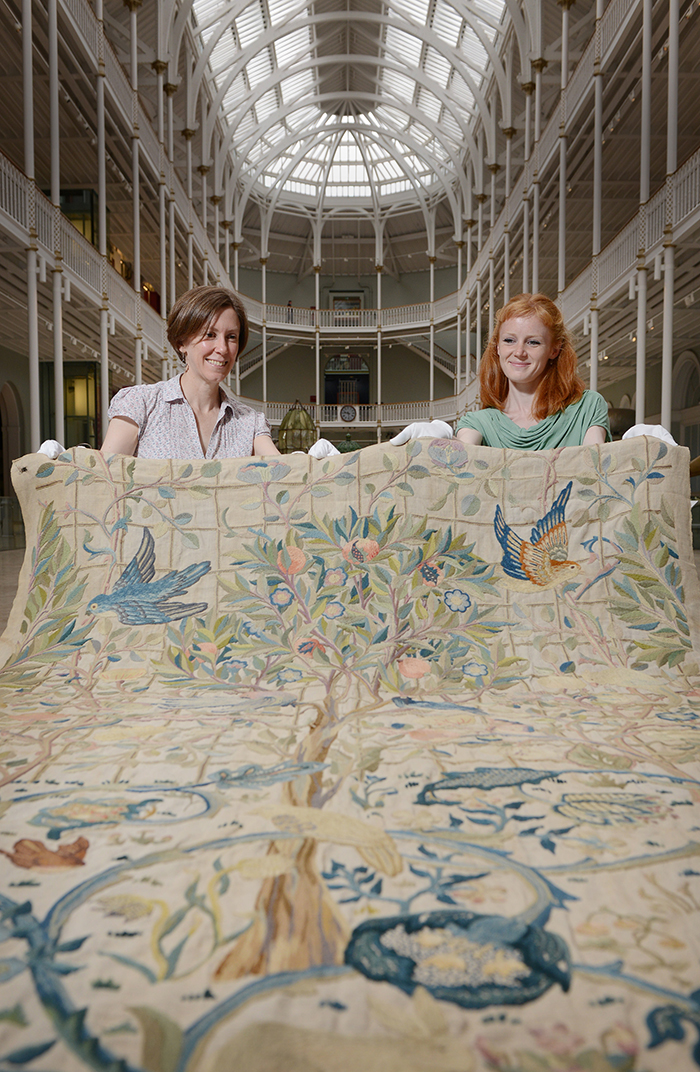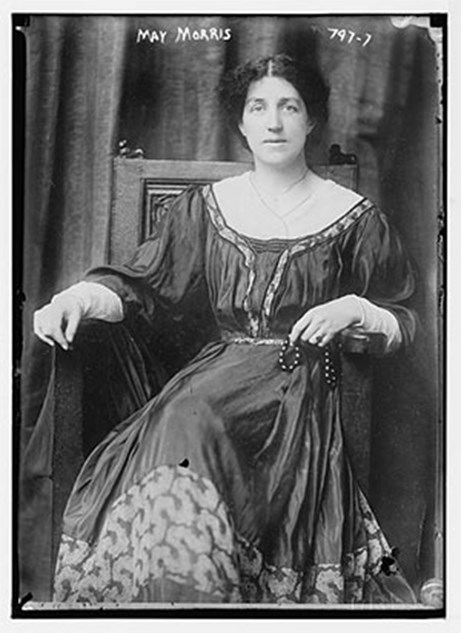Key in a search term below to search our website.
Key in a search term below to search our website.

These beautiful hangings were worked around 1900 by May Morris, the daughter of the designer, William Morris, the father of the Arts and Crafts movement.
Date
c.1900
Made by
May Morris and Theodosia Middlemore
Made for
Melsetter House in Orkney, home of Theodosia Middlemore
Made from
Wool, linen, metal
Museum reference
On display
Design for Living, Level 3, National Museum of Scotland
Did you know?
In 1907 May Morris founded the Women's Guild of Arts, because the Art Workers Guild would not admit women.

Above: The embroideries. © Neil Hanna.
Both hangings are of the same design worked in different soft pastel colours and stitches, with a central tree between rosebushes and floral trails and birds against a square trellis background. The foreground of each panel includes a robin and rabbit.
The embroideries are one of only two known examples of this design, the other also by May Morris dating from 1891 for a set of bed curtains for her father’s bed at Kelmscott Manor.

Above: Lynn McClean, Principal Textile Conservator and Emily Taylor, Assistant Curator, National Museums Scotland inspect the May Morris embroideries. © Neil Hannah Photography.
The embroideries were created for Theodosia Middlemore for her home, Melsetter House in Orkney. She and her husband were important patrons within the Arts and Crafts movement and Melsetter was built by the leading Arts and Crafts architect W. R. Lethaby. The house was one of the most important commissions of its day and was furnished with a combination of furniture designed by the architect and purchased from Morris & Company.
Theodosia was a close friend of May Morris and the hangings, designed by May, were worked jointly by May and Theodosia. Textiles actually worked by May Morris are extremely rare. Worked in natural dyed crewel wool on hand-spun and hand-woven linen, the wools are thought to be Orcadian as May and Theodosia are known to have spun and dyed local wool at Melsetter.
The hangings have only recently become known outside the family, having been passed down the generations until now.

Above: May Morris. Photo: Library of Congress Prints and Photographs Division Washington, D.C.